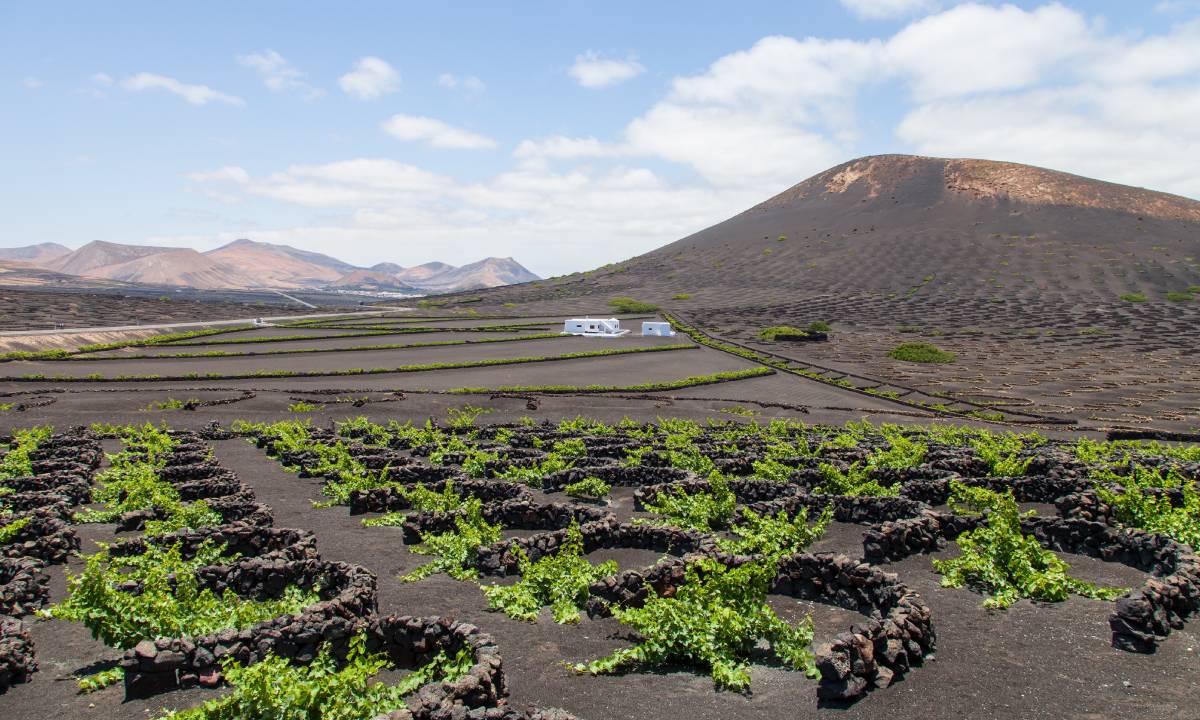6 designation of origin Canarian wines you have to try

When you visit the Canary Islands you have to set some time aside to savour its rich gastronomy, along with the exquisite Canarian wines which are becoming increasingly popular thanks to their extraordinary quality.
Of international renown, Canarian wines boast both huge variety and exceptional quality. They are all imbued with the individual character of the very earth they originate from.
The origins of Canarian wine
The origin of Canary Island vineyards dates back to the fourteenth and fifteenth centuries when the conquistadors arrived with various varieties of vines, resulting over time in incredibly unique wines.
6 designations of origin for 6 islands
The Gran Canaria designation of origin was born in 2005 following the unification of two existing ones: Gran Canaria and Monte Lentiscal. This designation’s Canarian wines are produced throughout the whole island, covering 250 hectares. The vineyards sit on small plots of agricultural land in the medianías (mid-altitude areas) and peaks of Gran Canaria. The most commonly-used grape for red wines is the Listán Negro. This variety of Canarian wine is characterised by its intense red colour, young character and perfumed aromas. In terms of Gran Canaria whites, the most common grape is the Moscatel de Alejandría variety. As soon as you taste this young wine you’ll be struck by its light, balanced and particularly aromatic character.
A wine born between volcanoes
Let’s now take a trip to the unique island of Lanzarote, which has held designation of origin status since 1993.
You’ll find unique vineyards scattered over the whole island, but the landscape in the La Geria area is especially impressive. For the grape growers this is a particularly hostile terrain, and they have to dig deep holes in the volcanic soil until they reach suitable topsoil. Curiously, this actually protects the vine, preventing evaporation and forming a stone wall barrier to protect them from the harsh winds.
On the island of Lanzarote white wines predominate, thanks to the high quality of a certain grape par excellence, la Malvasía. And you can enjoy more than simple wine. This grape yields high-end products in all its forms: young wine, crianzas, sparkling wines, liqueurs…
When you visit the western islands, you’ll find one of the most well-known Canarian designation of origin wines in Tenerife, from the Abona wine region. These vineyards are located in the mid and high-altitude regions of the south of the island, covering some 1,200 hectares.
This region is very much associated with white wines – 80% of its grape varieties are white and the remaining 20% are destined for red wine. The White Listán variety yields the majority of white Canarian wines, but you can also find other grape varieties such as Malvasía.
A wine refuge hidden under the sea
One of the curiosities of Canarian wines from D.O. Abona is the underwater wine cellar. A steel and concrete structure lies 18 metres deep, with a storage capacity for 5,000 bottles of Canarian wine. This unique wine cellar is the perfect refuge for Canarian wines, offering them protection against the harsh conditions of the ocean. And thanks to its unique pressure, temperature, humidity and light, storing the wine this way offers major benefits to the wine. What’s more, this submarine wine cellar offers environmental benefits: it attracts and protects marine life, above all angel sharks, an endangered species found swimming in the Canary Islands’ waters.
The colours and flavours of a unique landscape
From the bottom of the sea we head for the island of El HierroWine was first grown there in 1526, but it wasn’t until 1994 that the Regulatory Board for the Designation of Origin was formed. What’s special about this particular Canarian wine is that the vines are grown at low altitude, so the grapes ripen much more quickly.
One of the most highly-valued grapes grown on this island is the Bermejuelo variety. When you taste a sip of this white wine, you’ll pick up on the hints of fine herbs, right from the very mountain on which they grew.
The stunning island of La Palma has had designation of origin status for its wines since 1994. The Fuencaliente area is home to a particularly unique wine: Malvasía Dulce. This amber coloured wine boasts a huge variety of aromas, with raisins taking centre stage. The blend of sweet, bitter and acid flavours make the Canarian wine utterly unique.
We end our voyage in La Gomera, an island which has held designation of origin status since 2003 and is particularly noteworthy given that around 120 hectares of the island are dedicated to cultivating grapes to make the most delicious wines. The island’s topography makes these vineyards hard to access, so the La Gomera growers build stone terraces into the slopes to make the best of the steep gradient, creating a truly unique landscape.
Categories: Canaries, Gran Canaria, Be inspired, Tenerife





Leave a Comment